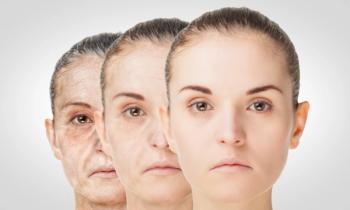Key Takeaways
·Grifols received FDA clearance to initiate a Phase II trial of GRF312, an immunoglobulin (IG)-based eye drop for treating dry eye disease.
·The trial builds on Phase I/II data showing significant symptom reduction with IG drops and no difference in safety profile compared with placebo.
·This marks a potential first use of IG for an ocular surface indication, expanding its therapeutic scope beyond systemic applications.
Grifols, a global healthcare company specializing in plasma-derived medicines, announced on May 21, 2025 (1) that it has received clearance from FDA to initiate a Phase II clinical trial of its immunoglobulin-based eye drop, GRF312 Ophthalmic Solution, for the treatment of dry eye disease (DED).
Dry eye disease is a chronic, multifactorial inflammatory condition that affects more than 100 million individuals worldwide, according to a company press release (1). It is characterized by insufficient tear production or excessive tear evaporation, leading to ocular discomfort, pain, and in severe cases, irreversible damage to the ocular surface. Standard treatments—such as artificial tears, corticosteroids, cyclosporine, and lifitegrast—may take weeks or months to deliver meaningful relief and do not work for all patients.
Potential built on earlier research
The Phase II trial is expected to begin in the third quarter of 2025 and will evaluate the safety, tolerability, and efficacy of GRF312 in 100 patients with DED. The clinical program builds upon a Phase I/II pilot study led by Grifols’ partner Selagine at the University of Illinois College of Medicine, Department of Ophthalmology, according to Grifols (1). That study demonstrated a significant reduction in both signs and symptoms of DED after eight weeks of treatment with the IG formulation, administered twice daily. The tolerability profile was comparable to that of placebo.
“We believe our immunoglobulin eye drops have the potential to make a qualitative leap in how dry eye disease is treated,” said Dr. Jörg Schüttrumpf, Grifols chief scientific innovation officer in the May 21 release (1). “Research suggests that the broad-spectrum anti-inflammatory and immunomodulatory properties of an ocular surface IG are superior to currently approved therapies, including artificial tears and anti-inflammatories. We are using our extensive and deep knowledge of immunoglobulins to benefit the millions of patients globally who aren’t receiving sufficient relief.”
Development of GRF312 stems from a 2023 collaboration and licensing agreement between Grifols and Selagine, under which Grifols acquired exclusive global rights to the IG-based ophthalmic treatment (2). The agreement leverages Grifols’ capabilities in developing and manufacturing immunoglobulin therapies and Selagine’s research and clinical experience in ophthalmology.
“Selagine and Grifols joining efforts and complementary expertise successfully led the treatment to a Phase II clinical trial,” said Sandeep Jain, MD, founder and President of Selagine and BA field professor of ophthalmology at the University of Illinois College of Medicine. “The results obtained to date and this promising development reinforce the potential of this novel treatment approach to significantly improve the quality of life of dry eye disease patients.”
Potential first-in-class application
The trial marks one of the first formal efforts to investigate immunoglobulin as a therapeutic agent for the ocular surface—a potential first-in-class application. If successful, GRF312 could represent a new mechanism of action for addressing inflammation and immune dysregulation in DED, with implications for both patient outcomes and therapeutic innovation.
In June 2024, Grifols announced that its subsidiary Biotest had garnered its first FDA approval with the intravenous immunoglobulin therapeutic, Yimmugo (3). Set to be distributed by Kedrion, preparations for an early 2025 launch in the United States was underway as of October
2024 for Yimmugo (4). No further news of the launch was available at the time of writing.
References






